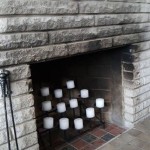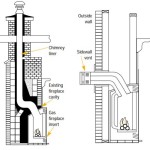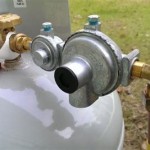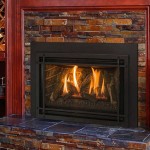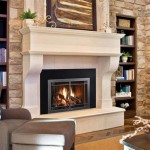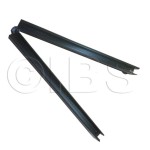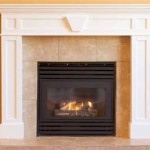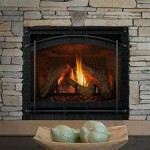Gas Fireplaces Installed: A Comprehensive Guide
Gas fireplaces are increasingly popular features in contemporary homes, offering the ambiance of a traditional fireplace without the mess and maintenance associated with wood-burning models. The installation of a gas fireplace, however, is a complex process that requires careful planning, adherence to safety regulations, and, in most jurisdictions, professional expertise. This article provides a detailed overview of the key aspects involved in gas fireplace installation, from initial planning to the final inspection.
The appeal of gas fireplaces stems from their convenience, efficiency, and aesthetic versatility. They can be ignited with the flip of a switch or the press of a button, offering instant warmth and visual appeal. Gas fireplaces also boast a high energy efficiency rating compared to traditional wood-burning options, converting a larger percentage of fuel into usable heat. Furthermore, the range of styles, sizes, and designs available allows homeowners to seamlessly integrate a gas fireplace into any interior décor.
Before embarking on the installation process, it is crucial to understand the different types of gas fireplaces available. These include direct vent, vent-free (also known as ventless), and natural vent models, each with its own unique installation requirements and performance characteristics. Selecting the appropriate type depends on factors such as existing venting infrastructure, desired heat output, and local building codes.
The installation process typically involves several distinct stages: pre-installation planning, gas line connection, fireplace unit placement and venting, and final inspection. Each stage requires meticulous attention to detail and compliance with relevant regulations to ensure safe and efficient operation of the gas fireplace.
Planning and Preparation: Essential First Steps
The initial phase of gas fireplace installation involves careful planning and preparation. This includes selecting the appropriate location for the fireplace, determining the necessary gas line capacity, and obtaining the required permits from local authorities. A thorough understanding of building codes related to gas appliance installation is paramount to ensure compliance and avoid potential safety hazards.
Location selection is a critical decision. Factors to consider include the availability of existing gas lines, proximity to combustible materials, and the desired aesthetic effect. The fireplace should be positioned in a location that allows for proper venting and adequate clearance from flammable objects, such as furniture and curtains. Furthermore, the location should provide sufficient space for the fireplace unit and any accompanying mantel or decorative surrounds.
Determining the required gas line capacity is crucial to ensure the fireplace receives an adequate supply of fuel. This involves calculating the British Thermal Unit (BTU) rating of the fireplace and comparing it to the capacity of the existing gas line. If the existing gas line is insufficient, a larger line may need to be installed to meet the fireplace's fuel demands. This often requires the services of a qualified plumber or gas fitter.
Obtaining the necessary permits is a vital step in the installation process. Local building codes typically require permits for gas appliance installations to ensure compliance with safety regulations. The permitting process may involve submitting detailed plans of the proposed installation, including the location of the fireplace, the gas line routing, and the venting system. Failure to obtain the required permits can result in fines and delays, and may even jeopardize the safety of the installation.
Gas Line Connection: Ensuring a Safe and Secure Fuel Supply
Connecting the gas line to the fireplace unit is a critical step that requires specialized knowledge and expertise. This task should only be performed by a qualified gas fitter or plumber who is licensed and experienced in working with gas lines. Improper gas line connections can lead to gas leaks, which pose a significant safety risk.
The gas line connection process typically involves shutting off the gas supply to the property, locating the gas line near the fireplace location, and installing a shut-off valve. The shut-off valve allows for easy isolation of the gas supply to the fireplace for maintenance or repairs. The gas line is then connected to the fireplace unit using appropriate fittings and sealant to ensure a leak-proof connection.
Gas leak testing is an essential step after the gas line connection is complete. This involves applying a soapy water solution to all gas line connections and observing for the formation of bubbles. The presence of bubbles indicates a gas leak, which must be addressed immediately. If a gas leak is detected, the gas supply should be shut off, and a qualified gas fitter or plumber should be called to repair the leak.
The type of gas used, whether natural gas or propane, is another crucial factor to consider. Gas fireplaces are typically designed to operate on either natural gas or propane, but not both. Using the incorrect type of gas can damage the fireplace and create a safety hazard. It is essential to verify the type of gas supply available and ensure that the fireplace is compatible.
Fireplace Unit Placement and Venting: Key Considerations for Optimal Performance
The placement and venting of the gas fireplace are critical factors that affect its performance and safety. The fireplace unit must be positioned according to the manufacturer's instructions, ensuring adequate clearance from combustible materials and proper alignment with the venting system.
Venting requirements vary depending on the type of gas fireplace. Direct vent fireplaces utilize a sealed combustion system that draws air from outside the building and vents exhaust gases directly to the exterior. This type of venting typically involves running a vent pipe through an exterior wall or roof. Vent-free fireplaces, on the other hand, do not require venting, as they burn cleanly and exhaust minimal emissions into the room. However, vent-free fireplaces are subject to strict regulations and may not be permitted in all jurisdictions.
Proper venting is essential to ensure the safe and efficient operation of a gas fireplace. Inadequate venting can lead to the buildup of carbon monoxide, a colorless and odorless gas that is highly toxic. It is crucial to follow the manufacturer's instructions for venting and to ensure that the venting system is properly installed and maintained.
For direct vent fireplaces, the vent pipe must be properly sized and installed to ensure adequate draft and prevent backdrafting. Backdrafting occurs when exhaust gases are drawn back into the room, posing a serious health risk. The vent pipe should be installed with a slight upward slope to facilitate the flow of exhaust gases to the exterior.
The location of the vent termination is also important. The vent termination should be positioned away from windows, doors, and air intakes to prevent exhaust gases from entering the building. Furthermore, the vent termination should be protected from obstructions, such as snow or debris, that could impede the flow of exhaust gases.
The use of appropriate materials for the venting system is also crucial. Vent pipes should be made of materials that are specifically designed for use with gas appliances, such as stainless steel or aluminum. The use of improper materials can lead to corrosion and deterioration of the venting system, compromising its safety and performance.
Fireplace unit placement also involves ensuring the unit is level and securely fastened to the floor or wall. This prevents the fireplace from shifting or tipping over, which could damage the gas line or venting system. In some cases, additional support may be required to ensure the stability of the fireplace.
Final Inspection and Testing: Verifying Safe and Efficient Operation
After the gas fireplace is installed, a final inspection and testing are essential to verify its safe and efficient operation. This inspection should be performed by a qualified gas fitter or inspector who is familiar with local building codes and gas appliance regulations.
The final inspection typically involves checking the gas line connections for leaks, verifying the proper operation of the venting system, and testing the fireplace's ignition and control systems. The inspector will also ensure that the fireplace is installed in accordance with the manufacturer's instructions and that all safety features are functioning properly.
Carbon monoxide testing is a critical part of the final inspection. This involves using a carbon monoxide detector to measure the levels of carbon monoxide in the room while the fireplace is operating. Elevated levels of carbon monoxide indicate a problem with the venting system or the fireplace itself, which must be addressed immediately.
The inspector will also verify that the fireplace has been properly labeled with the manufacturer's information and safety warnings. This information is important for future maintenance and repairs. The homeowner should also receive a copy of the inspection report and any relevant documentation related to the fireplace installation.
Proper operation of the gas fireplace should be demonstrated to the homeowner, including the ignition process, temperature controls, and safety features. The homeowner should also be provided with instructions on how to properly maintain the fireplace and how to recognize potential problems.
The entire installation process, from planning to final inspection, requires meticulous attention to detail and adherence to safety regulations. Engaging qualified professionals, such as licensed gas fitters and inspectors, is essential to ensure a safe and efficient gas fireplace installation. Ignoring these critical steps can lead to potentially dangerous situations, including gas leaks, carbon monoxide poisoning, and fire hazards.

Adding A Gas Fireplace To An Existing Home Just Log Fires

Efficient Prefab Gas Fireplaces Fireplace Showroom In Tilton Nh

Fireplace Installations Near Dc Chimney Experts

7 Benefits Of Installing A Gas Fireplace Low Maintenance Much More

How To Install A Fireplace Insert Diy Save Money

I Built A Fireplace Easier Than Thought

How To Install A Gas Fireplace Diy Built In

Convert To Gas Installing Fireplace Inserts Doctor Flue

If You Have A Gas Fireplace It May Or Not Chimney Flue

How To Select And Install A Gas Fireplace Log Set Fireplaces Direct Learning Center
Related Posts

